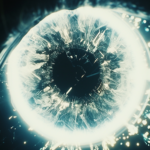Klick Labs scientists have developed an innovative method to detect audio deepfakes using artificial intelligence and vocal biomarkers.

Inspired by clinical studies and sci-fi films like “Blade Runner,” the researchers created an algorithm that identifies signs of life in audio, such as breathing patterns and micropauses in speech, which are typically absent in deepfake content.
This method uses machine learning to analyze these subtle vocal cues, enhancing the accuracy of deepfake detection.
The study, titled “Investigation of Deepfake Voice Detection using Speech Pause Patterns: Algorithm Development and Validation” and published in JMIR Biomedical Engineering, involved training deepfake models on voice samples from 49 participants of diverse backgrounds.
“Our findings highlight the potential to use vocal biomarkers as a novel approach to flagging deepfakes because they lack the telltale signs of life inherent in authentic content,” said Yan Fossat, senior vice president of Klick Labs. “These signs are usually undetectable to the human ear, but are now discernible thanks to machine learning and vocal biomarkers.”
The analysis of speech pause metrics enabled the algorithm to distinguish between real and fake audio with approximately 80 percent accuracy.
This research follows a number of high-profile voice cloning controversies, as well as regulatory moves like the Federal Communications Commission’s ruling to make deepfake voices in robocalls illegal. While the current findings are promising, lead researcher Yan Fossat emphasized the need for continuous improvement in detection technologies as deepfakes become increasingly sophisticated.
Source: Financial Post
–
May 31, 2024 – by Tony Bitzionis








Follow Us